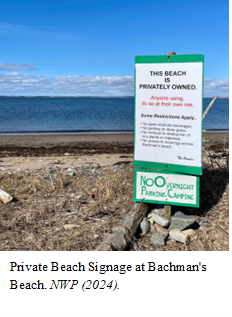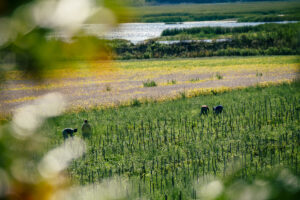Rethinking coastal authority in Nova Scotia: We all share the coast—so let’s share its governance!
Part I: Coastal stakeholders, values, and perspectives
Author: Myles De Jong. Research Assistant. International Development Studies BA program, Dalhousie University (2021-2025).
Although the coast is a common space for people in Nova Scotia, its meaning is far from universal. The way individuals, communities, and institutions understand and use coastal areas is shaped by a range of social, economic, political, and cultural values[i]. And because these perspectives often pull in different directions, conflicts between coastal stakeholders are inherently present.
For Mi’kmaq and other Indigenous Nations, the coast can hold spiritual and cultural meanings that don’t map neatly onto settler categories of property, productivity, or conservation. By contrast, a real estate developer might understand the coast primarily as a commodity defined by the market value of land. A fisher may see it as a productive space tied to livelihood and sustenance. A landowner might view it through property rights or privacy, asserting control over who has the right to be there. Meanwhile, environmental organizations often frame the coast as an ecological space in need of protection[ii].[iii]

Importantly, these perspectives are not mutually exclusive. Individuals may draw on multiple values simultaneously, and different groups may align or conflict depending on the context. A common example is how Indigenous Nations balance both customary fishing rights with stewardship ethics that prioritize ecosystem health[iv].

What matters is not just the values themselves, but how they intersect—and often collide—in shared spaces. When landowners restrict beach access in the name of privacy, it may conflict with local traditions of communal use[v]. When coastal development prioritizes economic returns, it may undermine conservation goals[vi]. These tensions reveal that the coast is a site of complexity, of contested meaning.
Recognizing that a degree of conflict is inherent to these tensions, the question is not whether conflicts will arise, but how they are managed—and who gets a say in that process.
In the next parts of this series, we turn from the multiple coastal meanings and values to the systems that govern it. How are these conflicts managed, and what are the limitations of existing governance frameworks? By examining Nova Scotia’s current coastal governance framework, we can begin to see why many of today’s tensions persist—and why alternative approaches may be needed.
References
[i] Poe, M. R., Norman, K. C., & Levin, P. S. (2014). Cultural Dimensions of Socioecological Systems: Key Connections and Guiding Principles for Conservation in Coastal Environments. Conservation Letters, 7(3), 166–175. https://doi.org/10.1111/conl.12068
[ii] Stocker, L., & Kennedy, D. (2009). Cultural Models of the Coast in Australia: Toward Sustainability. Coastal Management, 37(5), 387–404. https://doi.org/10.1080/08920750902855998
[iii] Mulrennan, M. and Scott, C. (2000), Mare Nullius: Indigenous Rights in Saltwater Environments. Development and Change, 31, 681-708. https://doi.org/10.1111/1467-7660.00172
[iv] Lee, L. C., Reid, M., Jones, R., Winbourne, J., Rutherford, M., & Salomon, A. K. (2019). Drawing on indigenous governance and stewardship to build resilient coastal fisheries: People and abalone along Canada’s northwest coast. Marine Policy, 109. https://doi.org/10.1016/j.marpol.2019.103701
[v] Harrison, H., & Winkler, N. (2024). Right of Way – Episode 5: This land is my land [Audio podcast]. https://www.hannahharrison.ca/coastal-access-project
[vi] Brooks, K., & Fairfull, S. (2017). Managing the NSW coastal zone: Restructuring governance for inclusive development. Ocean & Coastal Management, 150, 62–72. https://doi.org/10.1016/j.ocecoaman.2016.10.009
This publication is the result of a collaboration between the Ecology Action Centre and Climate Justice: Values and Vulnerability.


